- How to Propagate Monstera Guide: The Three Ways to Succeed - September 17, 2021
- Escargot Begonia: Why Is The Rex Begonia So Rare? - August 31, 2021
- Rieger Begonia: When You Can Expect The Hiemalis Begonia To Flourish - August 31, 2021
This Pothos variety is charming and simple to care for. It is a lovely plant to grow, to propagate, and to give away to friends and family. Gardeners of all skills are sure to swoon for one of these pretty plants.
How to Identify Glacier Pothos
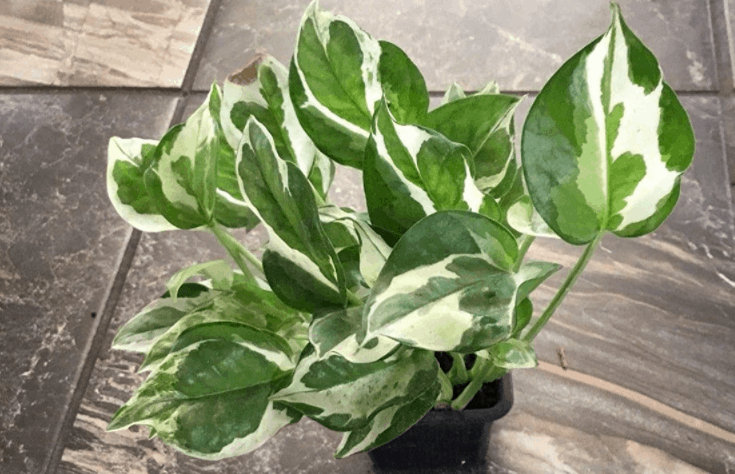
Glacier Pothos resembles N’Joy Pothos quite a bit; however, its leaves are more variegated and more crinkled. The key identifiers of Glacier Pothos are:
- Olive-green leaves variegated with a creamy white color
- Heart-shaped leaves
- Leaves that are slightly smaller than most other Pothos varieties
- Leaves that are somewhat crinkled
How to Grow Glacier Pothos from Seed
Pothos plants are difficult to grow from seed because they take a long time, they are easier to grow from stem cuttings, and they don’t produce seeds very often. However, if you choose to go this route to grow a Glacier Pothos, follow these steps:
- Purchase seeds from a reputable seller (sellers who price their seeds between $1 and $2)
- Soak the seeds in water for 24 to 48 hours
- Fill a container with a seed starting soil mix
- Plant the seeds in the soil mix
- Water the soil so that it is moist but not soggy
- Place plastic wrap over the top of the container
- Set the container in a warm spot that gets plenty of bright, indirect sunlight
- Once sprouts appear above the soil level, acclimatize them to open-air
- Once the plants are established, move them to a more permanent plant container
How to Propagate Glacier Pothos
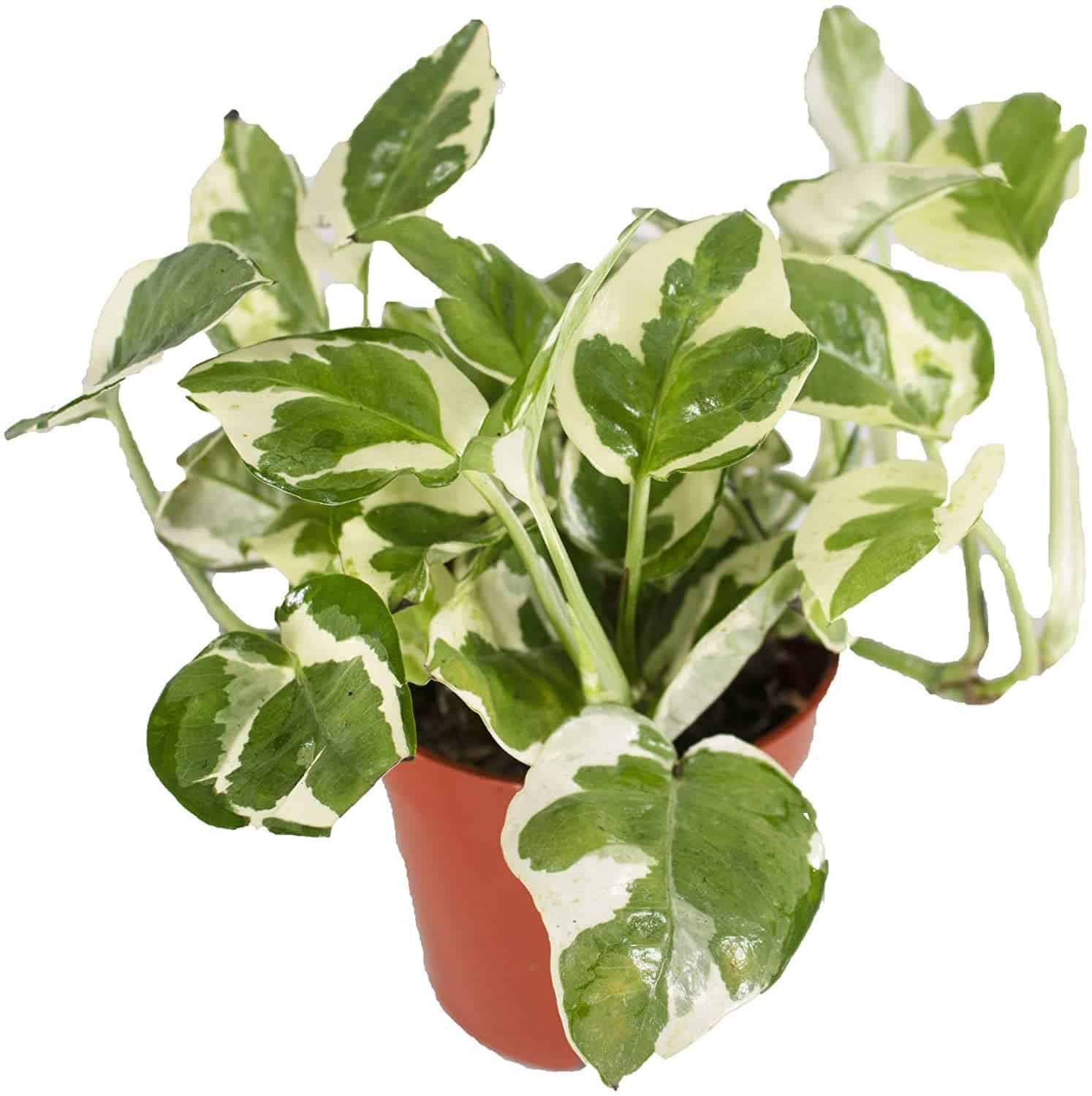
The easiest way to grow a new Pothos plant is via stem cuttings. This can be during pruning sessions or anytime a new plant is desired. The steps for doing this are as follows:
- Using a sterile cutting utensil, cut off a healthy stem that includes a leaf and a node
- Set the stem in a container filled with water
- Set the container in a place that gets bright but indirect sunlight
- Change the water every other week
- Once roots are an inch long, plant the stem in a container filled with potting soil that contains a mixture of perlite
- Water the potting soil and keep it moist but not soggy
Glacier Pothos Growing Conditions
These plants have adapted to live in a climate that is high in humidity and has temperatures ranging between 70 and 90 degrees Fahrenheit.
It may seem like this is a fussy plant because it needs such warm and humid temperatures, but this couldn’t be further from the truth. Glacier Pothos is actually a very hardy and undemanding plant that can thrive in many different environments. Nevertheless, it still does best in hot and humid climates.
Provide your tropical plant with all the warm moisture it needs by setting a pebble tray under it or a plant humidifier next to it. It may also benefit from a plant heat mat.
How to Plant Glacier Pothos
Repotting plants will provide them with new, fresh soil and a chance to grow bigger and stronger roots. Pothos plants typically need repotting every two to three years. Signs that a plant needs repotted are:
- Soil that is compacted
- Roots that are crowded and growing into a ball formation
- A plant that looks too big for its current container
The steps for repotting a Pothos plant are:
- Fill a new container that is two inches larger than its previous container with potting soil
- Create a hole in the soil for the plant to set inside
- Carefully remove the plant from its current container by laying the plant on its side and then pulling the pot off the root system
- Gently dust off any excess soil from its roots
- Set the plant into the hole in the new container
- Spread the soil around so that the plant is secure in its new container
- Water the plant
- Set it in a warm spot with indirect sunlight
Glacier Pothos Potting & Soil

Happy Frog potting soil is an excellent choice for all Pothos varieties. It is able to drain well but still hold some moisture, which is a balance that these tropical plants require. This type of soil also includes plenty of organic material that will provide nutrients to the plant.
Drainage is not the only factor to consider when it comes to soil. Glacier Pothos also requires soil that has a pH level ranging between 5.0 and 7.5. Testing soil pH levels is easy when using a Soil pH Meter. It is also simple and straightforward to adjust soil levels.
For more alkaline soil add the following ingredients to your soil:
- Aged sawdust
- Wood chips
- Peat moss
- Pine needles
- Oak leaves
For more acidic soil add the following ingredients to your soil:
- Bone meal
- Hardwood ashes
- Ground eggshells
Glacier Pothos Water Requirements
Although this plant is native to humid, tropical islands, it can actually handle going without water for some time. Because it is drought tolerant, it is best to check the moisture level of its soil before watering it. This method will reduce the risk of root rot. Soil that is 50 % dry from the top down can use a drink; however, soil that is 50% moist does not need any more water.
When it is time to water a Glacier Pothos, it should be watered deeply until the excess water flows out of its container’s drainage holes. If any excess water accumulates in the container’s saucer, it should be discarded.
Take advantage of modern technology by using a plant watering app. This type of app can help track when a plant has been watered, set reminders to water it, and get answers to common plant care questions.
Glacier Pothos Light Requirements
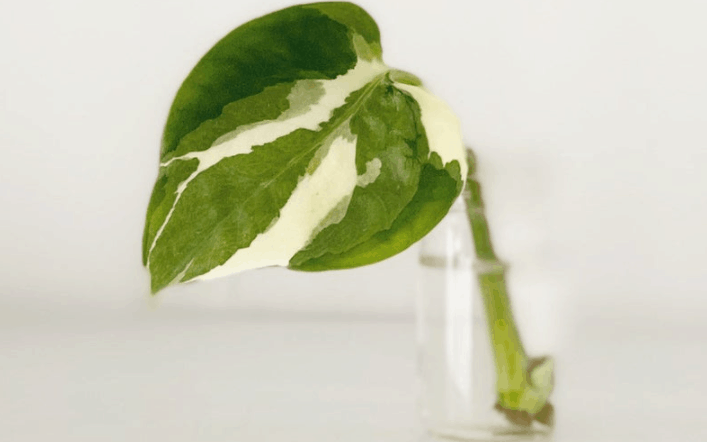
Glacier Pothos plants grow and look their best when placed in a spot that gets plenty of bright, indirect sunlight. Too much direct sunlight will dry out and burn their leaves, but too light sunlight will cause the plant to grow sluggish and lose its color variegation.
Modern technology can assist with determining an adequately sunlit place to set your plant. Use a light meter to test indoor light capacity is a great way to ensure that the plant is receiving the amount of sunlight it needs.
Best Glacier Pothos Fertilizer
Glacier Pothos plants are not heavy feeders and should only be fed in the following cases:
- An extra boost during the spring growing season
- The plant looks weak
- The plant’s growth is stunted
Choose either a balanced fertilizer, such as a 5-5-5 fertilizer, or worm compost for this plant.
Best Glacier Pothos Companion Plantings
It is inevitable that you will want more plants once you experience an easy-going Glacier Pothos. More plants can sharpen your gardening skills, create a relaxing and natural atmosphere anywhere in your home, and provide tropical plants with much-needed extra humidity. There are many options to use as companion plants for a Glacier Pothos, but consider one of the following:
Monstera Varieties
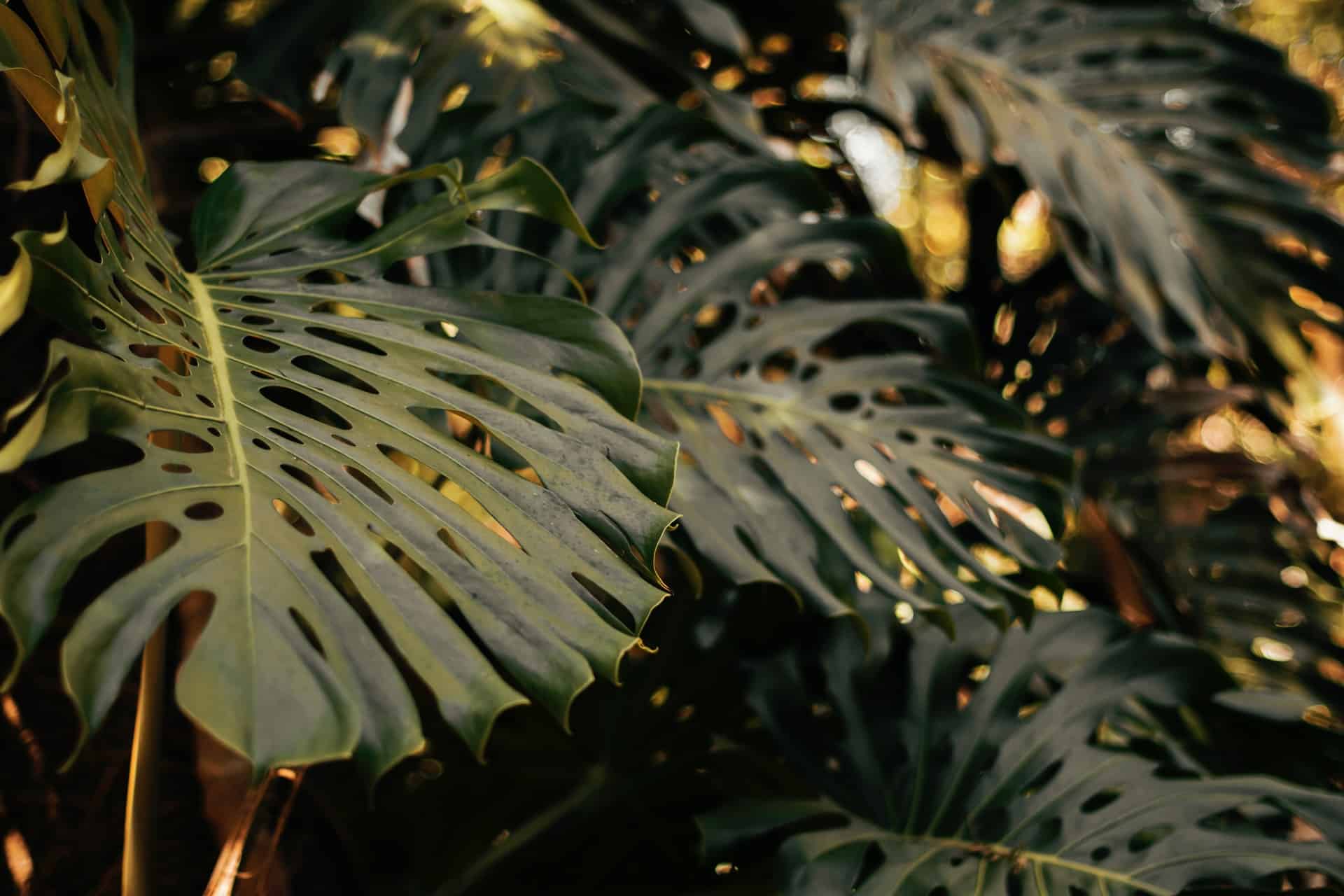
These tropical plants will provide your Pothos plant with extra humidity without any hassle. Not only do their care requirements resemble those of Pothos plants, but they are also very beautiful. It is a gardener’s dream to have two unfussy and beautiful plants in the same garden.
Pros
- Monstera plants are highly decorative houseplants
- Monstera plants are easy to care for with care requirements that are similar to Pothos plants
- Certain Monstera varieties produce edible fruits
Cons
- Monstera plants are slightly toxic
Marble Queen Pothos
This is another Pothos variety that features variegated leaves. Marble Queen and Glacier Pothos will look fabulous next to each other. Plus, there is not an inkling of a hassle that comes from caring for either of these varieties.
Pros:
- Marble Queen Plants are easy to care for and have care requirements that are the same as Glacier Pothos plants
- Monstera Queen Plants can remove common household toxins from the air
Cons:
- Marble Queen Pothos plants are toxic to humans and animals
Calathea Musaica
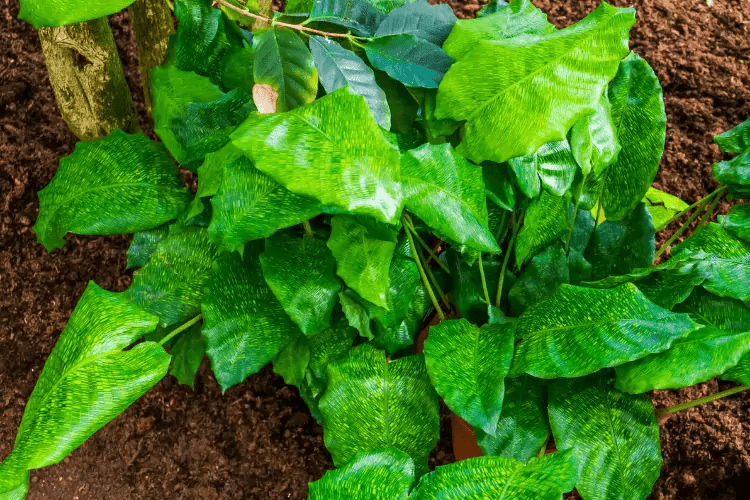
This is a variety of Calathea that features long oval leaves that feature an unusual and unique mosaic pattern. It may be a slightly fussy plant, but its good looks will more than make up for that.
Pros
- Calathea Musaica is an unusually beautiful plant
- Calathea Musaica is not toxic
Cons
- Calathea Musaica can be fussy about its needs
Glacier Pothos Diseases and Common Problems
Pothos plants of all varieties are susceptible to a few pests and diseases, but if you learn how to properly care for your plant, these should not be a huge problem. Here are the most common issues faced by Pothos plants:
Bacterial Wilt

Evidence of this disease are leaves that wilt and stem veins that turn black. This is an extremely contagious and fast-growing infestation for plants. Any plant that shows evidence that it has bacterial wilt should be quarantined from other plants. To do with this type of infestation, follow these steps:
- Remove the plant from its container
- Wash off all the dirt from its roots
- Replant the plant in a clean container with fresh soil
- Use a plant protector such as Wilt Stop
Manganese Toxicity
Evidence of this problem is leaves that drop prematurely, leave that have yellow marks or flecks on them, and leaves that have darkened veins. To deal with this issue, it is necessary to discontinue the use of any fertilizer that contains manganese and to add lime to the soil so that its pH levels range between 6 and 6.5.
Mealybugs
Evidence of an infestation of mealybugs is small white spots that look like cotton on leaves and stems. To deal with an infestation of mealybugs, follow these steps:
- Spray a solution of alcohol and water on the leaves
- Rub the leaves with a cotton ball
- Coat the leaves in neem oil or insecticidal soap every few days
Root Rot
Evidence of this problem is leaves that have turned brown or black. To treat this problem, let the soil dry out completely and set the plant in a place where it will get plenty of airflows. If it is still struggling with too much water in its container, follow these steps:
- Remove the plant from its container
- Wash off all the dirt from its roots
- Cut off any roots that are rotten
- Replant the plant in a clean container with fresh soil
- Wait to water it for a few days
Southern Blight
Evidence of this problem is strands of white, feathery fungus growing on top of the soil and on the plant’s stems. To deal with this problem, it is necessary to discard the plant and plant container completely so that it cannot pass on the infestation to other plants. This disease is usually caused by contaminated potting soil. Refrain from storing potting soil directly on the ground since this is the best way for Sclerotium rolfsii to grow into a colony.
Glacier Pothos Treatments and Maintenance
The best way to prevent harmful diseases and pest infestations on any plant is to provide it with regular care and cleaning. Here are a few tips to help keep your Pothos plant as healthy as it can be.
- Check it for signs of disease and infestations regularly, and treat them quickly.
- Clean the plant’s leaves regularly with neem oil.
- Learn how to properly water and feed your plant.
- Make sure your plant is set in an area with adequate amounts of sunlight, heat, and humidity.
- Mix diatomaceous earth into the soil of potted plants.
Where to Buy Glacier Pothos Seeds Online
Pothos seeds from every variety are difficult to find because these plants are easier to propagate via stem cuttings and Pothos plants do not produce seeds very often as houseplants. When you search for seed sellers, look for those who have good ratings and price their seeds between $1 and $2 per seed.
Where to Buy Mature Glacier Pothos Online
While Glacier Pothos seeds may be difficult to come by, mature plants are not. These online shops are great places to search for this plant.
A Plant for Anyone & Everyone
Glacier Pothos are plants that every, despite their lack of gardening skills, can grow and enjoy. This plant is the epitome of being easy-going. Why not give it go in your garden?
FAQs
Question: Is Glacier Pothos Toxic?
Answer: Yes, just like most Pothos varieties, this plant is toxic to pets and children. If someone has consumed one of these plants, call a medical professional or poison control immediately.
• Poison Control Center
• Animal Poison Control
• Ask a Poison Control Vet
Question: USDA Hardiness Zone Can Glacier Pothos be Planted In?
Answer: These are not cold-hardy plants, so it is important to know which hardiness zone you live in so you can determine how to plant them. Glacier Pothos should only be planted in the ground if you live in zones 9b to 11. If you live in zones lower than these, they should be planted in a container that can be transferred indoors during winter.
Question: How Long Can a Pothos Plant Live?
Answer: A Pothos plant that is well-tended can live up to ten years.

